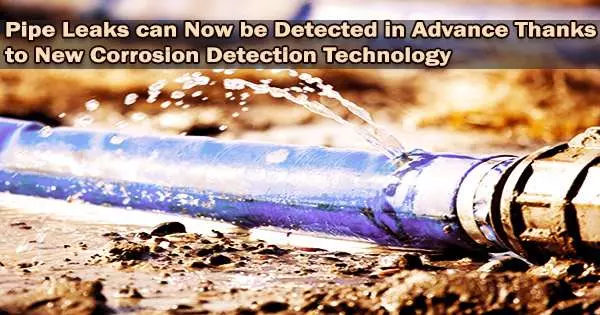Corrosion monitoring systems use sensors to continuously monitor the condition of a pipe and alert maintenance staff to any changes that could indicate the onset of corrosion or a potential leak.
Pressure testing involves pressurizing a pipe and then checking for pressure drops, which can indicate a leak. Ultrasonic testing uses high frequency sound waves to detect leaks, while infrared imaging uses thermal cameras to detect temperature changes that could indicate a leak.
The next generation of transducers has been developed by Southwest Research Institute (SwRI) to identify irregularities in pipelines using ultrasonic guided wave technology, allowing users to stop leaks before they begin.
The device, which utilizes the SwRI-developed Magnetostrictive Sensor® (MsS®) technology, will be showcased at the American Society for Nondestructive Testing’s (ASNT) Annual Conference in Nashville, Tennessee, from October 31 to November 3.
“Pipeline corrosion resulting in leaks is very common,” said SwRI Staff Engineer Sergey Vinogradov, who developed the technology with Staff Engineer Keith Bartels and other SwRI staff members.
“There are only a few current methods to detect defects before they cause leaks. Quite often, the pipe is repaired and re-inspected after a leak occurs. We’ve developed a technology that can consistently monitor the pipe’s condition, hopefully preventing leaks from happening in the first place.”
The technology is known as a Magnetostrictive Transducer (MsT) Collar. It was originally developed by SwRI in 2002. The updated version has a flat, thin design allowing it to be used on pipes in tight spaces.
It can tolerate temperatures up to 400 degrees Fahrenheit in specially designed settings. Eight sensors are included in the new segmented MsT design, which allows the transducer to more precisely pinpoint the location of corrosion in the pipe.
Instead of using one sensor to cover an entire pipe circumference, allowing only the axial location of an anomaly to be measured, we now have eight sensors in the transducer. Each of the sensors are independently connected to the electronics so that all possible guided wave signals can be acquired. Algorithms combine this information to better detect and locate the anomaly both axially and circumferentially, and the growth of the corrosion can be monitored by examining data sets acquired over time.
Sergey Vinogradov
The magnetostrictive sensors used in the MsT Collar produce and receive guided waves that travel along an elongated structure while being guided by its boundaries. With the help of this method, the waves can cover large distances with minimum energy loss.
Many times, a single site can inspect a distance of hundreds of meters, but barriers like couplings would need a separate sensor.
“Instead of using one sensor to cover an entire pipe circumference, allowing only the axial location of an anomaly to be measured, we now have eight sensors in the transducer,” Vinogradov said. “Each of the sensors are independently connected to the electronics so that all possible guided wave signals can be acquired. Algorithms combine this information to better detect and locate the anomaly both axially and circumferentially, and the growth of the corrosion can be monitored by examining data sets acquired over time.”
The MsS system can use a cable connection or a wireless transmitter unit to convey data to a remote interface. It is primarily made for oil and gas transmission pipes to stop leaks before they become expensive and harmful.
However, the method is adaptable and has been used to different industrial pipes, including those used in chemical plants, water and heating systems, and heating systems.
Vinogradov and Bartels will demonstrate the MsT Collar at the ASNT Annual Conference in Nashville, Tennessee, from October 31 to November 3 at booth 1219.
















